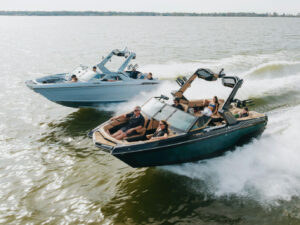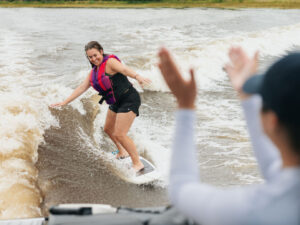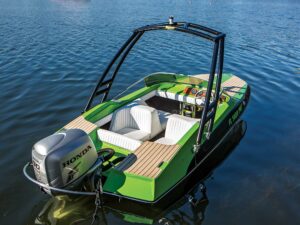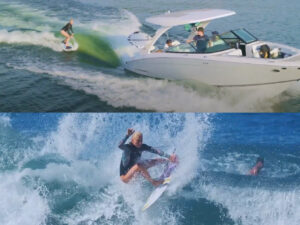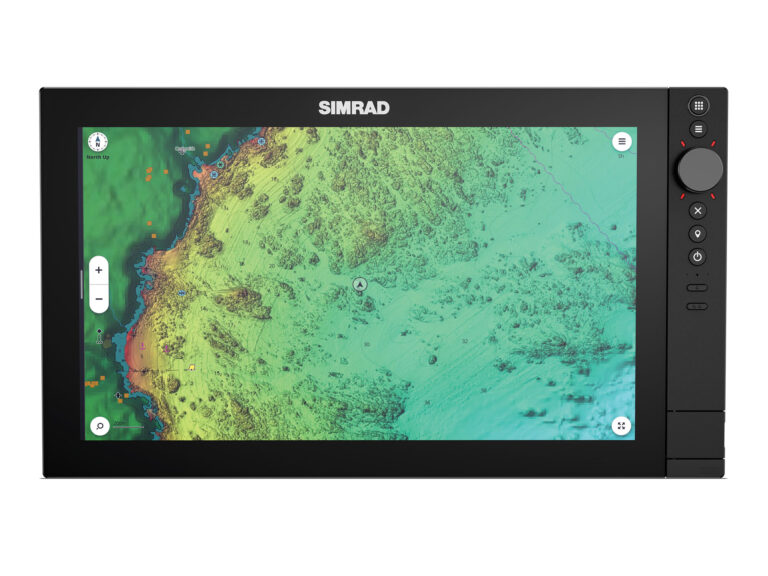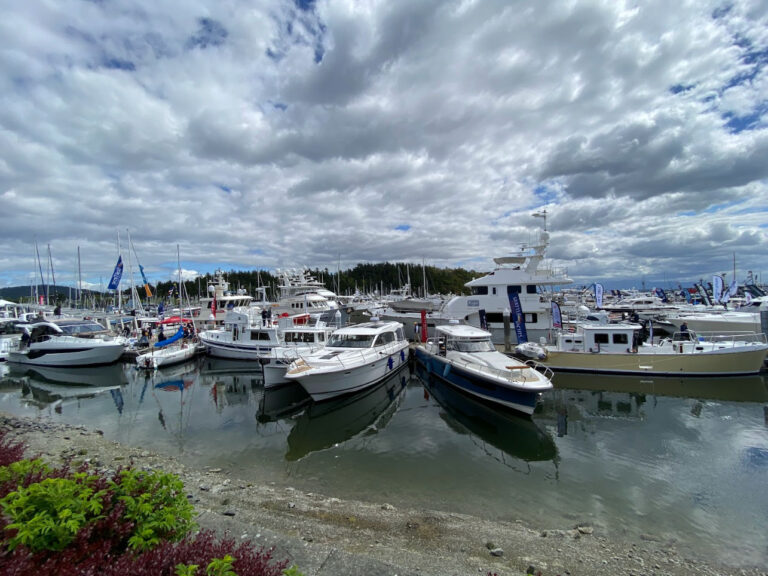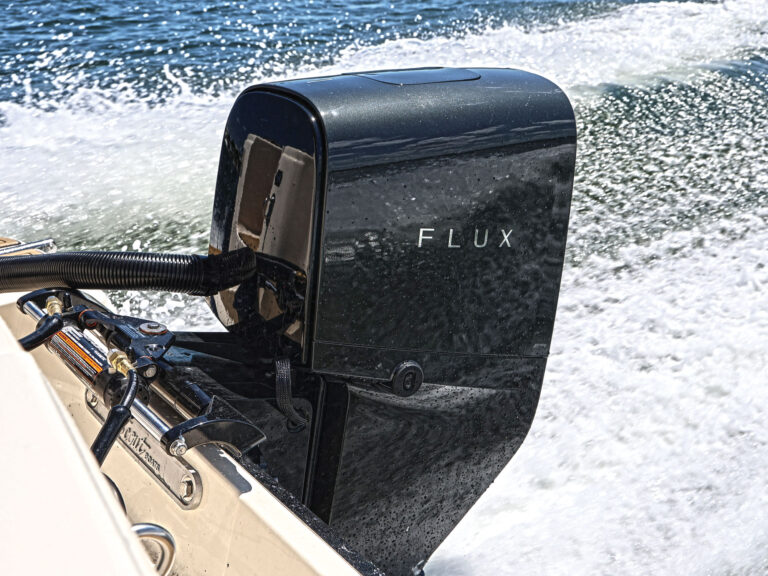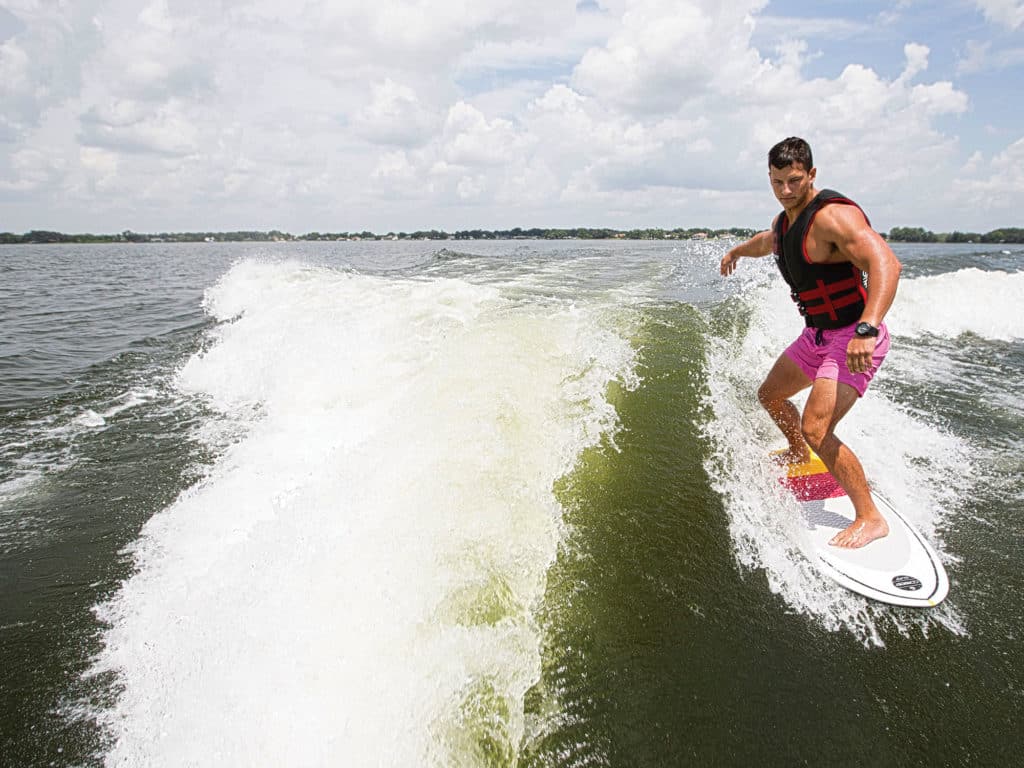
When water-skiers, wakeboarders and wakesurfers want to improve, they often think new equipment is the answer. And while new equipment can improve your performance, it is only part of your strategy for improvement.
You can have the best equipment, but if your technique is lacking, you will hit a plateau when it comes to improving and endure many unneeded falls. Body position is crucial to success, but many often overlook it. Optimal body position will ensure faster progress and fewer awkward falls.
When I coach, the first thing I observe is how the student positions their weight over his or her feet. Common mistakes include bending forward at the waist. This puts too much weight on the toes and balls of the feet, and leads to forward falls. Conversely, excess weight on the heels—the effect of rigid knees and ankles—results in poor balance and poor control of the ski or board. Slalom skiers and wakeboarders often make the mistake of having the knee and ankle of the forward leg stiff while the knee of the back leg is overly bent. This mistake also puts too much weight on the tail. In these cases, the ski or board will not glide over the water efficiently.
Your balance starts with your feet. When I coach, I ask the student to tell me exactly where his or her weight is positioned over the feet. Typically, the student will not have thought about this, and the question fosters an awareness of where body-weight pressure is positioned over the feet. The pros are highly aware of body position and can explain exactly where pressure is being applied over their feet.
So, what body position will give you maximum balance and control of the ski, board or wakesurfer? Your hips and seat should be directly over the middle of your feet. Your back and head should be aligned with your hips and demonstrate good posture, especially when water-skiing and wakeboarding. Bend your knees and ankles simultaneously. Your knees will flex forward, and your seat and hips will sink slightly lower, directly over the middle of your feet, similar to a ballet plie. This movement distributes your body weight evenly over your ski or board, providing optimal balance. Many make the mistake of bending the knees only, which puts you in a squatted position. The key is to bend the knees and flex the ankles forward simultaneously so that your weight stays directly over the middle of your feet.
Read Next: How to Drive a Boat for Wake Sports
It is helpful to practice this on land first. Develop an awareness of how your hips and seat are positioned over your feet. Notice that flexing your knees and ankles distributes pressure evenly through your feet.
In addition to providing optimal balance, this position allows you to control and direct the ski, board or wakesurfer efficiently. By using your leg strength and applying pressure to the ski or board through your knees, ankles and feet, you can cross the wake, making smooth carving turns or sharp turns. Using this technique also allows you to do rotational tricks on a wakeboard or wakesurfer.
So, the next time you are on the water, keep your eyes on the horizon but stay aware of where your weight is positioned over your feet. Your balance will improve, and you will take your success and fun to a higher level.

